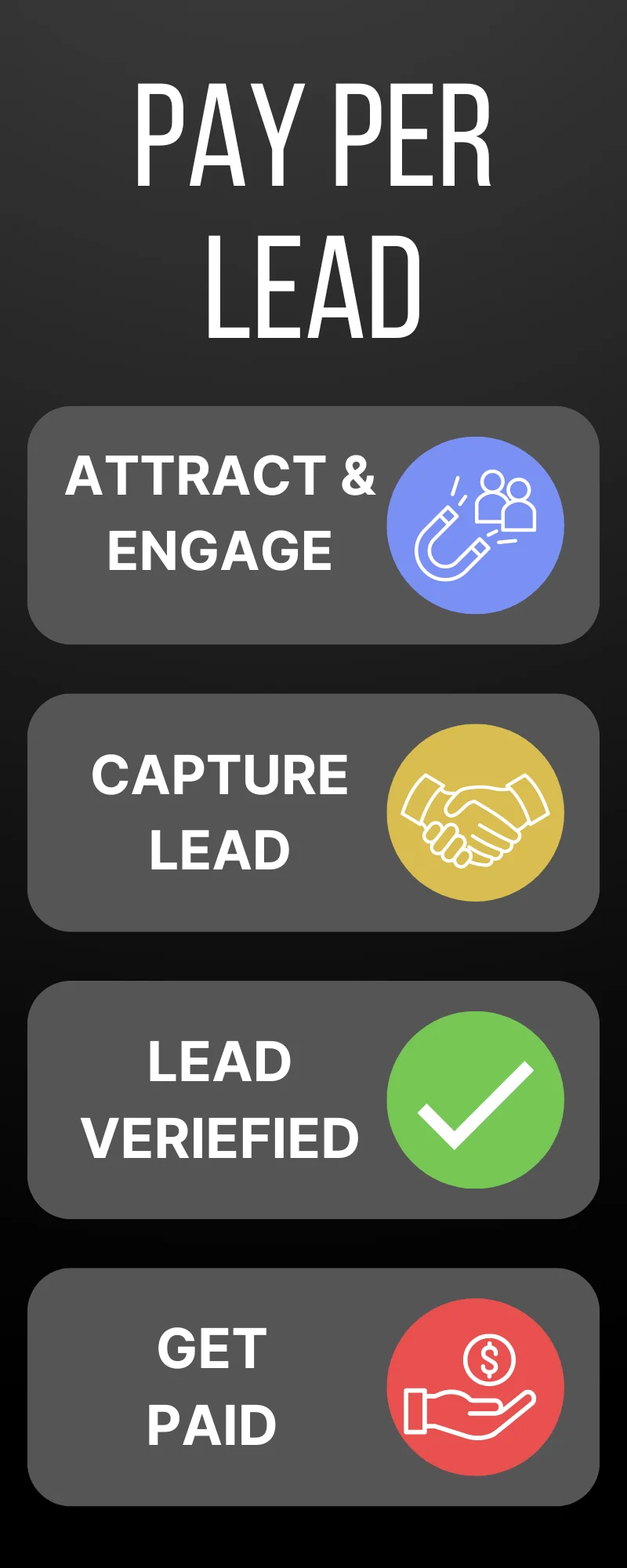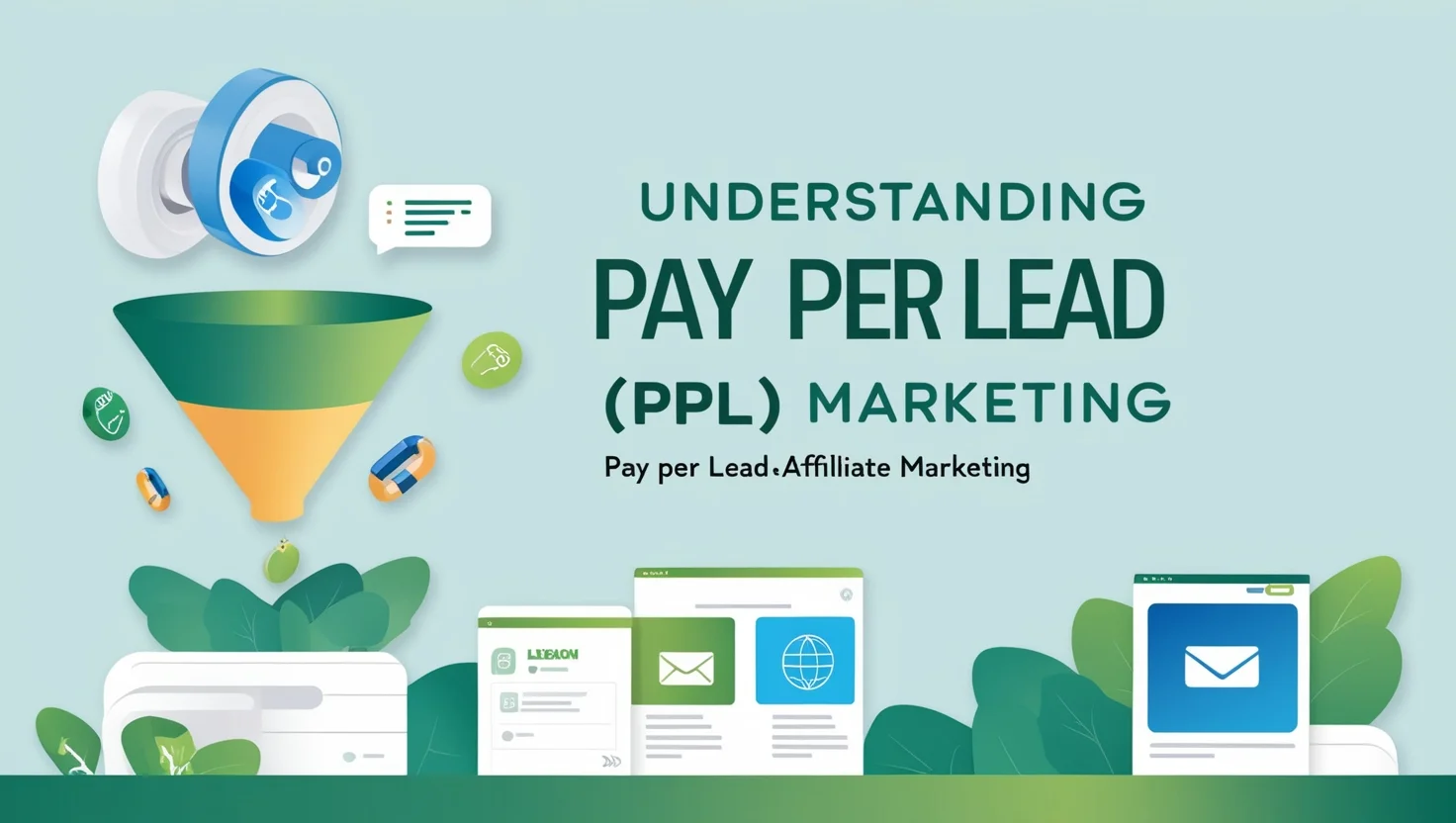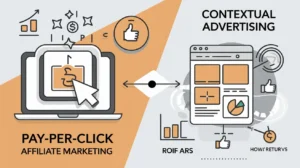Affiliate marketing has various ways to pay affiliates, making some clicks more rewarding than others. To get the best bang for your buck, you’ll need to know the basics.
How Affiliate Payments Work
Affiliate marketing pays out in a few main styles. Here’s a cheat sheet to the most common ones:
| Payment Model | What’s It About? | How Much Hustle Is Needed? |
|---|---|---|
| Pay Per Click (PPC) | You get paid every time someone clicks through to the merchant’s website. | Low effort, just bring the traffic. |
| Pay Per Lead (PPL) | Earn money for every lead you bring in, usually when someone shares their contact info. | Medium to high effort, quality leads are the goal. |
| Pay Per Sale (PPS) | Make a commission when someone makes a purchase through your link. | High effort, you’re aiming for a sale. |
Affiliate marketing is big business—worth around $12 billion—showing it’s a trusty strategy. Picking the right payment model is key to a winning affiliate program.
Why Payment Models Matter
Knowing these different models helps both marketers and affiliates. It shapes how you direct your marketing, how motivated your affiliates are, and the content you create.
Cost Per Click (CPC) is great if you want more site visitors. Affiliates get paid for each click, so there’s no pressure to turn those clicks into customers immediately.
The Cost Per Lead (CPL) model, similar to Cost Per Action (CPA), demands more effort. Here, you’re paying for leads, meaning visitors who show interest by sharing their contact info (Easy Affiliate).
Then there’s Cost Per Sale (CPS) or Pay Per Sale (PPS). This one only pays when a sale is made through an affiliate’s referral. It’s a win-win because nobody’s losing money if sales aren’t happening.
Each model requires different levels of effort and types of content. You might use strategies like SEO, Google Ads, or social media campaigns, depending on the model you use. Understanding these helps marketers pick the best option for their goals. For more detailed info, check out our article on different types of affiliate marketing here.
What’s Pay per Lead (PPL)?

Pay per lead (PPL) affiliate marketing is where you get paid for gathering potential customer info—like names, emails, or phone numbers. No need to hustle for an actual sale. Just snag some interest through ads, SEO, or content marketing (Leadshook). The main idea is to link curious folks with businesses on the hunt for new customers.
Commissions can swing wildly, based on stuff like niche and location. We’re talking anywhere from $30 to a cool grand per lead . So, PPL is a sweet gig for affiliate marketers wanting to mix up their income while helping businesses score potential clients.
Why Bother with Pay per Lead?
PPL affiliate programs come packed with juicy perks for both you and the business. Check these out:
Bigger Bucks: PPL typically pays more than the pay per click (PPC) gigs. Leads are hot prospects for businesses, making them worth more dough.
Less Stress: You’re not under the gun to close a sale. Just get the contact info, and you’re in the money (Affilorama).
Easy Scaling: Got your lead-gen strategy down? Good news—you can just keep cranking without going back to the drawing board for new products or services.
Pinpoint Marketing: Since PPL zeroes in on leads who are already kind of interested, you can target specific niches for more tailored marketing and higher conversion rates.
PPL isn’t just a win for affiliates. It opens doors for businesses to connect with folks who genuinely care about their stuff (Phonexa). If you’re diving into this model, experimenting with different tactics and mastering lead-nabbing strategies can boost your results. Want to know more about the variety of affiliate marketing out there? Check out our intro to types of affiliate marketing.
Killer PPL Campaigns That Work

Landing high-quality leads that turn into customers is where the magic happens in PPL campaigns. Take EverQuote, for instance, an online spot for insurance shopping. EverQuote gives users tailored insurance quotes and cashes in on each lead it sends to insurers. In 2019, these guys raked in over $248 million using this savvy approach.
Successful campaigns use a mix of tricks like:
- PPL Ads: Paying affiliates a set amount for leads from ads.
- SEO: Optimizing content to pull in organic traffic.
- Content Marketing: Sharing valuable info that nudges potential customers into converting.
To hit the jackpot, make sure your leads match your target crowd, boosting those all-important conversion rates.
What Makes PPL Tick
Getting PPL right boils down to a few key pieces:
| Piece | What It Means |
|---|---|
| Lead Quality | Better leads mean better chances of converting them into customers. Relevant and interested leads are gold. |
| Target Audience | Know your crowd. Demographics and interests help shape your marketing to pull in the right folks. |
| Marketing Channels | Pick the right places to connect with potential customers. Think social media, emails, SEO, and more. |
| Affiliate Skills | Affiliates’ knack for generating leads makes a huge difference. Different tricks give different results. |
| Affiliate Incentives | Give affiliates more reasons to care. Rewarding them for sales as well as leads can push them to up their game (Referral Rock). |
By tuning into these pieces, you can sharpen your tactics and boost your success with PPL marketing. Dig into how pay per click marketing and pay per sale marketing to up your game and get the most bang for your buck.
In the wild world of affiliate marketing, it’s important to know the lay of the land before diving in. Different strategies work better for different goals. Let’s break down what you need to know!
Different Affiliate Marketing Models
Pay per lead is a whole other ballgame compared to pay per click (PPC) and pay per sale (PPS). Here’s a quick look:
| Affiliate Marketing Model | What It’s About | How You Get Paid |
|---|---|---|
| Pay Per Lead (PPL) | Get folks’ contact info, like emails or phone numbers. | You get a set amount for every qualified lead you bring in. (Affilorama) |
| Pay Per Click (PPC) | Earn from just getting people to click. No need for them to buy or sign up for anything. | Cash in on every click on your referral link. More details in our pay per click guide. |
| Pay Per Sale (PPS) | Earn from actual sales through your referrals. | You snag a cut from the sales made through your efforts. Learn more in our pay per sale article. |
Pay per lead marketing is like planting seeds for future sales. You’re not focused on immediate sales but on gathering potential customer info. Perfect for building a customer list over time.
What’s the Best Fit?
Not all models suit all folks. Your pick depends on your goals, audience, and strategy. If you’re all about gathering leads and nurturing future sales, pay per lead could be your jam. No rush to sell, just get those leads.
On the flip side, if you want to see sales roll in immediately, pay per sale might be best. Pay per click works if you need fast traffic, though it might not build deeper relationships with customers.
In short, each model has its strong points and weak spots. Knowing these helps you make the best choice. For more comparisons and insights, check our types of affiliate marketing intro.
What is Pay Per Lead (PPL) in affiliate marketing?
PPL is a type of affiliate marketing where affiliates earn a commission for generating leads, such as collecting contact information like names and emails, instead of requiring a sale.
How does Pay Per Lead differ from Pay Per Sale (PPS)?
In PPL, affiliates get paid for generating leads regardless of whether a sale occurs. In PPS, payment is only made when a referred customer makes a purchase.
What kind of offers work best for PPL campaigns?
Offers like free trials, eBooks, webinars, and newsletter sign-ups typically perform well as they encourage users to share their information without requiring an immediate purchase.
How do I choose the right audience for a PPL campaign?
Target an audience that is interested in your offer and likely to share their contact information. Use demographic and behavioral targeting to narrow down your ideal audience.
How are leads verified in PPL marketing?
Leads are usually verified by the affiliate provider using criteria like accurate contact information and genuine interest in the offer. Invalid or fake leads are often rejected.
What are the common challenges in PPL marketing?
Challenges include generating high-quality leads, avoiding fake or spammy leads, and meeting the specific requirements of the affiliate provider for lead verification.
How can I improve the success of my PPL campaigns?
Focus on creating high-quality lead magnets, optimize your landing pages, use targeted ads, and continuously analyze and adjust your strategies based on performance data.











